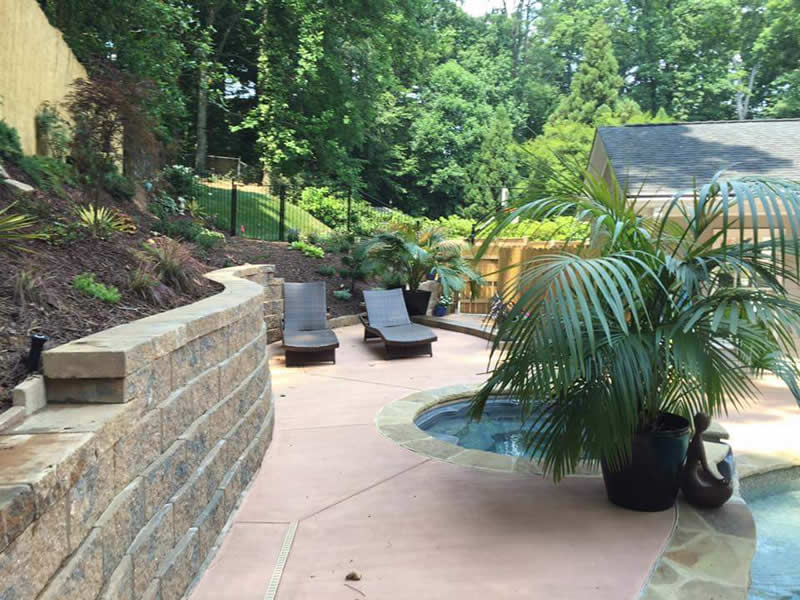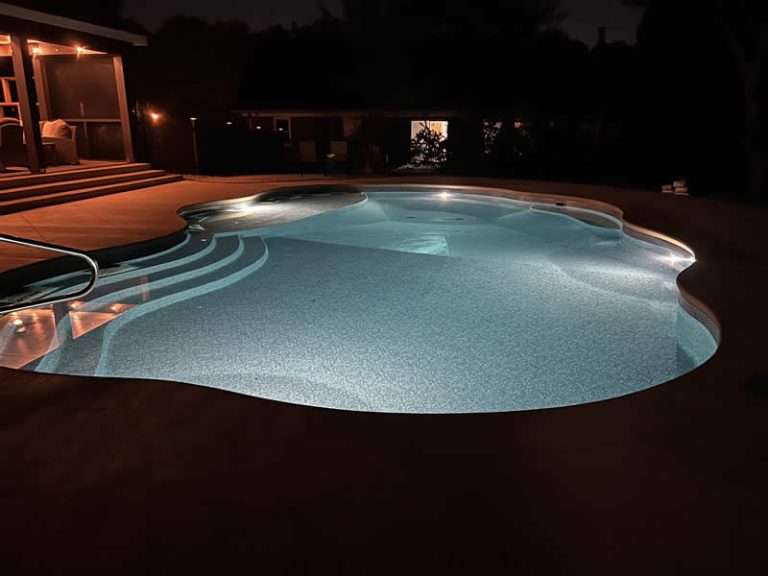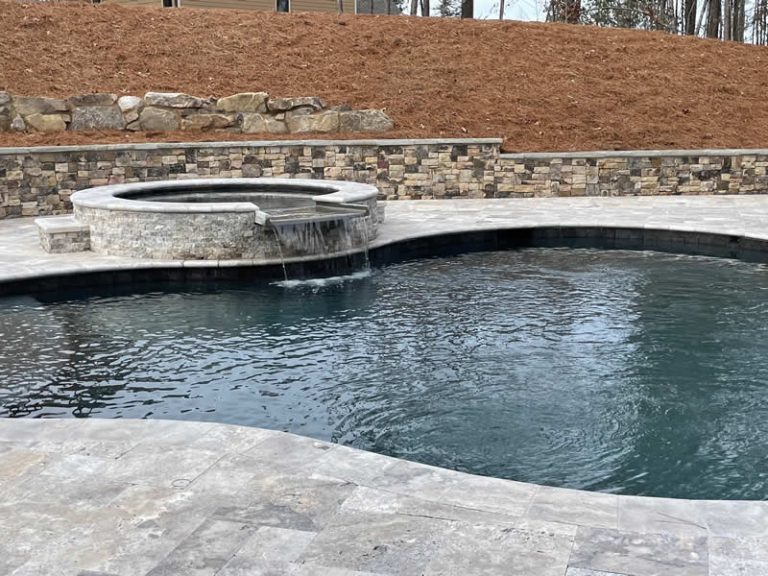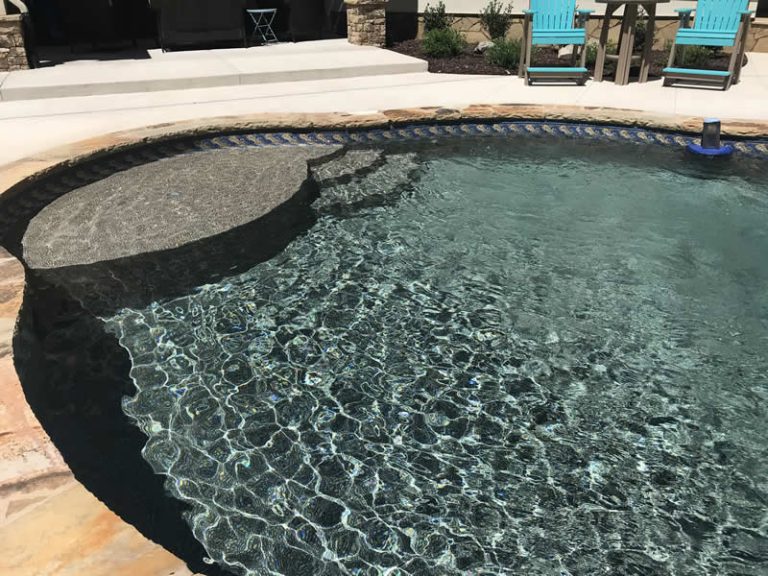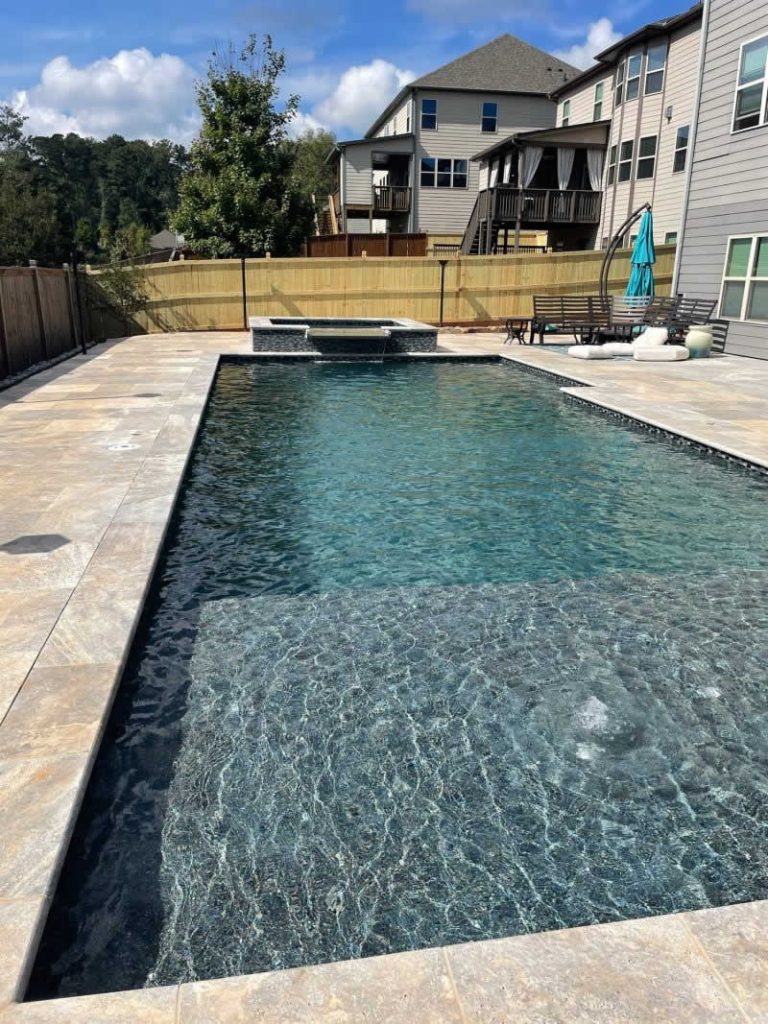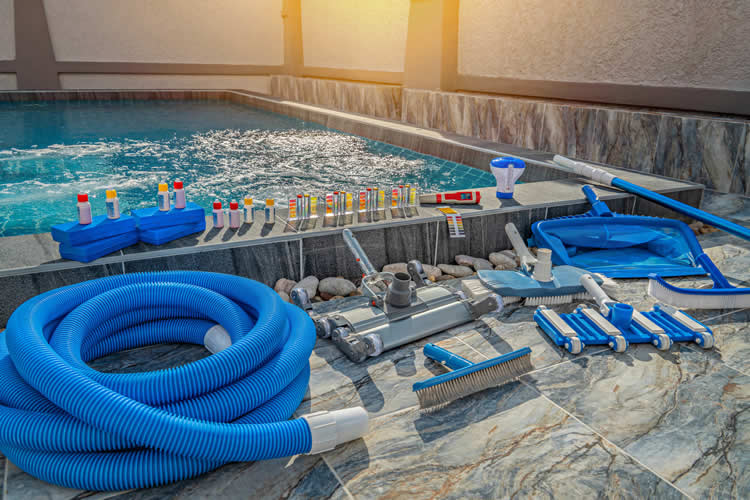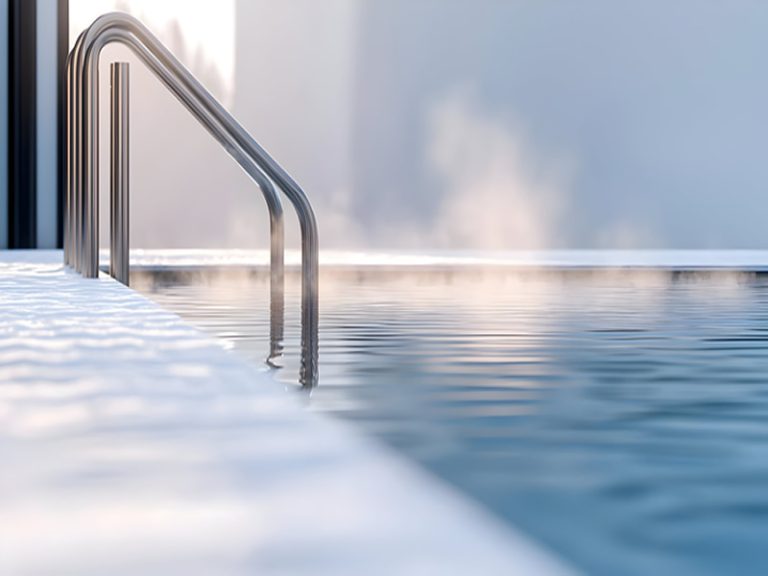Choosing the Right Decking and Hardscape for Your Pool
When people picture their dream pool, they usually imagine the water — the sparkle, the reflections, the sound. But what most don’t realize until later is that you’ll spend more time on the deck than in the water. The space around your pool is where you’ll sit, walk, eat, and entertain. It needs to look good, feel good, and hold up to years of use in Georgia’s mix of heat, humidity, and surprise cold snaps.
Picking the right decking and hardscape materials isn’t just about style; it’s about comfort, safety, and maintenance. The right choice makes your pool area feel effortless — the wrong one can mean slippery surfaces, constant cleaning, or cracked concrete by the second summer.
How Decking Shapes the Experience
A pool deck does more than surround the pool — it defines how people move through the space. A wide deck gives you room for loungers and gatherings; a narrow one creates intimacy. Textures and colors affect how hot the surface feels, and materials influence everything from glare to grip.
When we design a pool, I tell clients to imagine how they’ll use it on a normal day. Do you walk barefoot from the back door to the water? Do kids run laps around the edge? Do you host dinners outside? The answers shape material choice more than any trend ever could.
The Top Decking Materials for Georgia Pools
Let’s look at the most popular options and what makes each one unique.
Travertine is hands-down the favorite among Georgia homeowners — and for good reason. It stays cooler underfoot than most natural stones, resists slipping even when wet, and ages beautifully. Its subtle variations in tone give it a timeless look that works with brick homes, modern builds, and everything in between. Travertine can handle freezing temperatures as long as it’s installed correctly with drainage underneath.
Poured concrete remains the workhorse option. It’s cost-effective, versatile, and durable. Stamped and stained finishes have come a long way; they can mimic the look of stone or tile at a fraction of the cost. The key is to choose a light color to reduce heat absorption. For families on a budget, a well-finished concrete deck is hard to beat.
Pavers offer flexibility and easy repair. If one cracks, you simply replace that piece. They come in concrete, brick, or natural stone, giving endless pattern possibilities. Pavers naturally provide traction, making them a great choice for kids or high-traffic areas. Just make sure they’re properly sealed and set on a stable base to prevent shifting over time.
Porcelain and ceramic tiles are gaining popularity in high-end builds. They offer a sleek, modern look and come in slip-resistant finishes designed for wet areas. Porcelain doesn’t fade or stain easily and stays relatively cool. It’s ideal for clean-lined contemporary designs or when you want to extend indoor flooring seamlessly outdoors.
Composite decking (like Trex or TimberTech) isn’t just for patios anymore. Around pools, it works best in raised or partial deck designs. It’s low-maintenance, splinter-free, and great for adding contrast or warmth near water features. The main consideration is ensuring proper drainage to prevent expansion or warping.
Balancing Heat, Safety, and Maintenance
In Georgia’s climate, surface temperature matters. A beautiful stone deck isn’t much use if you can’t walk on it barefoot in July. Light-colored materials like travertine, ivory pavers, and sand-colored concrete reflect more sunlight and stay cooler. Avoid dark slate or black stone unless it’s shaded most of the day.
Slip resistance is another big factor. Even a small splash area can get slick. Look for finishes labeled “tumbled,” “textured,” or “non-slip.” If you’re going with poured concrete, a light broom finish provides just enough traction without roughness.
Maintenance varies by material. Travertine and natural stone benefit from sealing every year or two. Concrete should be resealed every few years to resist staining and fading. Pavers may need joint sand touched up periodically. The goal is to protect against chlorine, salt, and Georgia’s red clay — all of which can leave marks if left untreated.
Designing a Deck That Feels Like an Extension of Your Home
Your pool area shouldn’t feel like an add-on; it should feel like it belongs to the property. One easy way to achieve that is by repeating materials or colors from your home’s exterior. A brick coping that matches your home’s base, or stone pavers that echo your porch columns, tie the whole space together.
Transitions also matter. Consider using contrasting borders or inlays to define lounge zones, dining areas, or walkways. For example, a travertine deck with a darker limestone border looks intentional and elegant. Multi-level decks with retaining walls or planters can turn slopes into functional, beautiful spaces.
Lighting should always be planned at the same time as your hardscape. Built-in step lights, pathway LEDs, and wall sconces make evening use safer and more inviting. It’s easier to run conduit during installation than after the fact.
The Hidden Role of Drainage and Expansion
The prettiest deck won’t last long if water doesn’t drain properly. Standing water seeps into joints and causes expansion and cracking. We design every deck with subtle slopes and proper drains to direct water away from both the pool and the house. Expansion joints also help manage temperature changes, especially in concrete, where thermal movement can cause visible cracks over time.
Mixing Materials for Function and Flair
You don’t have to stick with one material. Many of the best designs combine two or three. Travertine or porcelain near the pool for comfort, pavers for the dining area, and composite decking for a raised lounge or spa level. Mixing textures breaks up the space visually and helps define zones without walls or railings.
The secret is to keep the color palette consistent. If you’re using warm beige travertine, pair it with tan or cream accents rather than cool gray concrete. Consistency ties it all together, even if the materials differ.
Making It Last
Once your deck is installed, a little care goes a long way. Rinse regularly to prevent buildup, reseal on schedule, and use furniture pads to avoid scratches. Pressure washing is fine — just keep the nozzle moving and stay gentle on grout or joints.
The investment in good decking pays back every single day you use your pool. It’s where memories happen — the laughter, the barbecues, the quiet nights when the lights hit the water just right. The deck isn’t just where you walk; it’s where your pool comes to life.
Let’s Talk …
Let us take care of your Pool & landscape
At Aqua Fun, we don’t just build pools — we build relationships that last for seasons to come. Our team takes the time to understand your space, your needs, and how you actually use your backyard. Then we craft solutions that make every swim, soak, or gathering more enjoyable. It’s not about selling you more; it’s about helping you get it right.
If you’ve been thinking about improving, repairing, or re-imagining your pool, let’s talk. We’ll meet you where you are, explain your options clearly, and make sure the whole process feels simple and stress-free. That’s the Aqua Fun way — real people, real care, and results that speak for themselves.
Mon – Fri
8:00 – 6:00

